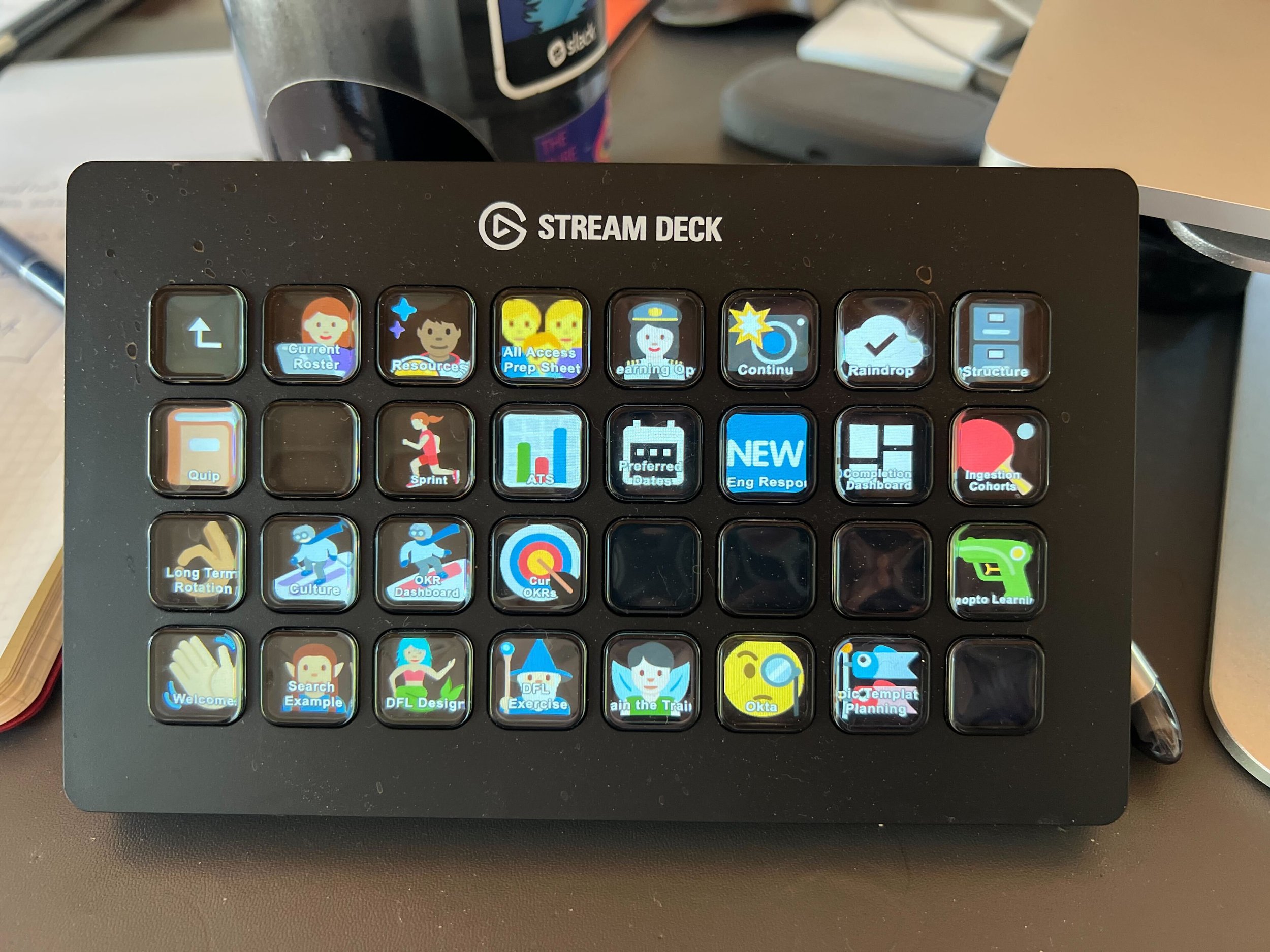I’ve had repetitive stress injury from too much programming since 2017. I switched to engineering learning & development back in 2018, because I can apply my twenty years of software engineering experience without typing anywhere near as much. Since, then I’ve developed many techniques to make the computer usable with fewer key presses, less mouse movement, and less chording. (Chording is when two of more keys are pressed simultaneously, like Cmd-Shift-P. I usually requires thumb contortions, which are especially hard on my De Quervain’s tenosynovitis).
I’ve got a bunch of techniques I’ve worked up over the years, but the latest is easy enough that people without RSI should consider trying it out to reduce wear and tear on their one pair of hands, or simply computer usage if you have limited mobility: use of macro pad with configurable color images in every button.
Elgato Stream Deck XL on my desk, with many colorful buttons featuring emoji of people and objects
The Elgato StreamDeck XL is a 32-button macro pad combined with software that maps each button to a particular image, label and command. The images have a vague association at best with the command they invoke: the wizard opens my vision statement for digital-first learning: the women running links to my current jira sprint board; the bullseye links to my current objectives & key results. The brightly colored & perky images are wayyyy easier to remember than my ergodox’s static key labels.
It gets better: I can configure many pages of buttons. The image above is my “frequent URLs” page. I’ve got another page with cut, copy, page, undo, but also frequents snippets (my email address, my personal zoom meeting URL) and frequent commands: new window, launch Slack, show mission control, etc. I’m just starting to code again, so I’ve started a new button page for Visual Studio Code key commands.
Besides saving me from chording an repetitive typing, this extra keyboard device forces me to move from y hands-on-keyboard position with a coarse movement, which uses a different kind of musculature and gives a quick break to my tensioned wrists & fingers. Even if you don’t have repetitive stress injury, yet, give the StreamDeck a try; in twenty years, you’ll be grateful for every key you didn’t have to press.
PS: Nope, my current employer didn’t pay for this. They did buy me my original gear — an ergodox, foot pedals, a special mouse, DragonDictate — as part of the Americans with Disabilities Act “reasonable accommodations,” without which I would be unable to work. I could probably have gotten them to pay for it, but it would have taken a lot of paperwork, and it was easier to pay $300.
Slack’s ongoing support for my disability has been amazing; I’m grateful to be employed in a career that lets me use my twenty years of software engineering experience. Without these accommodations, my hands would be in much worse shape, and I’d be unable to do a computer-based job.
